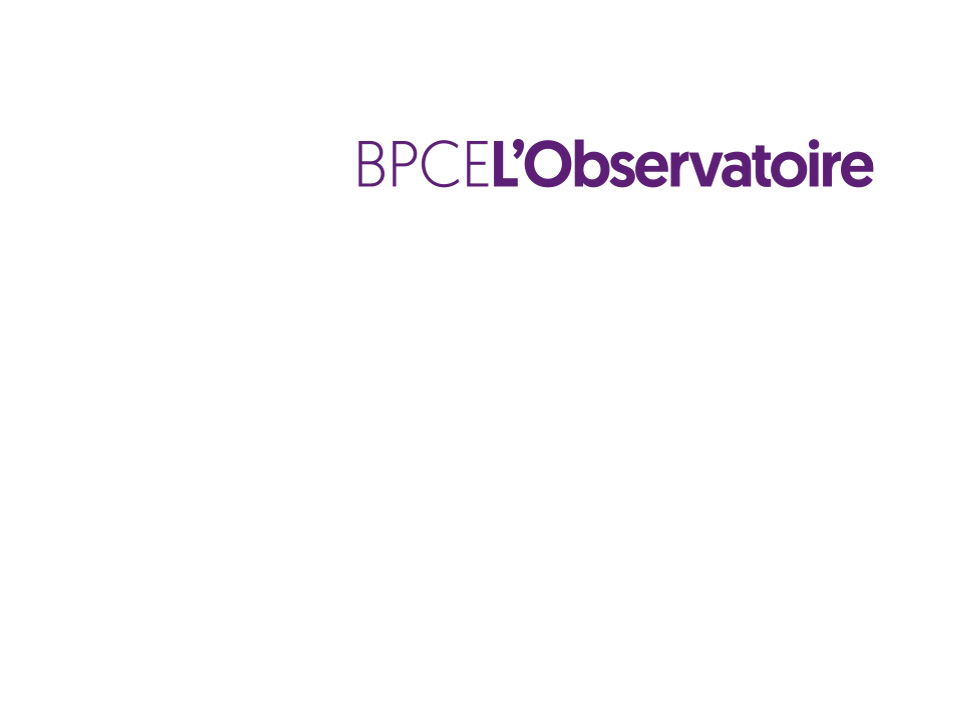

Residential real estate review and outlook for 2025
[May 2025] In this new study, the economic experts at BPCE L’Observatoire present their analysis of the housing market amid ongoing instability and share with readers their outlook for 2025, particularly regarding the role of first-time homebuyers.


How are the French reacting to current market instability?
In recent months, changes in the macroeconomic and financial landscape have created opportunities for the residential property markets in France despite the tense domestic political climate and mounting uncertainties in the international arena. Rather than acting with unbridled optimism, the French are taking time to adapt to the new market conditions and are generally proceeding with caution, most often tempered by their practical ability to embark on long-term real estate projects.
In the existing housing market, the slump in home sales seems to be a thing of the past…
After hitting rock bottom in October 2024, housing sales have started to pick up again. Thanks to a rebound in the home loan market driven by the easing of interest rates since January 2024, the recent improvement in the existing housing market appears, for now, to offer a moment of respite after the sharp decline that began in 2022. At the beginning of 2025, indicators show that the volume of transactions remained low compared to the previous decade, with a sales rate of 11.8 per 1,000 inhabitants. While this remains moderate over the long term, it is nevertheless higher than the levels seen during the previous crises of 2009 and 2014.
11.8‰ The sales rate observed since early 2025
… which is helping to buoy up prices that, nevertheless, are showing early signs of a downward trend
As a result of declining activity in the housing markets – which varied in both pace and intensity across different sectors – property prices fell in France between 2021 and 2024 in all markets, from the most sought-after areas to the least attractive.
The year-on-year decline in prices, however, only partially reflects the diversity of the markets and more recent trends, as illustrated by the virtual stability of the national index of existing home prices in the 4th quarter of 2024 compared with the 3rd quarter last year (+0.1%).
By late March 2025, prices were even trending upward in nearly half of the major French cities, for both apartments (new and old, three roomed properties) and single-family homes (new and old, properties with four and five rooms). One takeaway from this real estate crisis – a crisis that the French market may not yet have fully put behind it – could be the resilience shown by regional markets.
The construction of new homes appears to remain persistently sluggish
In contrast, the property market for new builds is still facing a critical situation largely due to the inherently long cycles of housing construction, which have been further exacerbated by adverse short-term factors since 2020, and even more so since 2022, with the introduction of significant constraints in the production chain. These difficulties are clearly illustrated by the current levels of construction starts and new building permits, which, although showing very recent signs of improvement, remain at historically low levels.
All market segments are affected, from homes intended for owner-occupation to those for rental purposes (whether social, intermediate, or private rentals). One of the sectors most affected by this construction crisis is that of single-family homes built on isolated plots (not part of housing estate developments), whose share has fallen to 23% today compared with 53% in the early 2000s.
289,750 individual home construction started over a one-year period in March 2025
The extension of the interest-free loan (PTZ) program, effective from April 2025, to the entire country and to all types of new housing – both collective and individual – could help stimulate the new-build market. This measure could breathe new life into both the property development sector and the single-family home sector.
According to the 19th wave of the BPCE L’Observatoire-Audirep barometer survey conducted in February 2025, the French are experiencing a hitherto unprecedented level of indecision regarding their real estate projects. The survey reveals that people are uncertain about whether now is a good time to buy or sell a property (with fewer than one in five believing the timing is favorable at present), with the current climate representing a source of considerable worries, both domestic (rising unemployment, higher taxes, uncertainty about future pensions, etc.) and international (trade and geopolitical tensions).
After years of decline, will the market recover in 2025, even sluggishly?
There is only limited potential for interest rate cuts on new home loans
Since peaking at 4.17% in January 2024, interest rates on new home loans had fallen to 3.20% in March 2025. This decline in interest rates on new loans took place against a backdrop of strong upward pressure on French government borrowing rates. At an average of 3.0% in the 4th quarter of 2024, the interest rate on 10-year OATs (Obligation assimilable du Trésor, or French Treasury bonds) rose again in 2025 to reach 3.5% in March.
As this rate has historically set the lower bound for new mortgage rates, it is unlikely that interest rates paid on mortgages will stray far from it. Nevertheless, the increased focus on first-time buyers in loan production – driven both by the government’s expansion of the PTZ interest-free loan and by lenders offering special loans to first-time and young buyers – is expected to put mild downward pressure on average rates. Overall, the average rate on new home loans could be around 3.2% by the end of the year, a level very close to the OAT rate.
Growing transaction volumes in 2025
The momentum in real estate transactions remains somewhat constrained. It should be noted that in France, 8 out of 10 property transactions are financed by loans, making interest rates a crucial factor in the decision to buy a home. Moreover, just over half of French respondents say that a 50 basis point change in interest rates would have a major impact on their buying plans (leading them either to postpone or abandon the purchase if rates rise, or to accelerate or complete the purchase if rates fall). Meanwhile, nearly 90% of French people remain concerned about the economic outlook. In this context, intentions to buy a home within the next year have dropped significantly, along with intentions to sell a property. This decline in intentions, which is concentrated on primary residences, is occurring despite an improvement in households’ purchasing power for real estate.
All in all, real estate transaction volumes in 2025 are expected to rise by a modest 3.3%, reaching a total of 959,000 sales. Transactions involving existing homes (815,000, or 85% of the total) should see only limited growth amid household uncertainty and potential increases in transfer duties in some areas. Meanwhile, government measures contained in the 2025 budget to support the new housing segment are expected mainly to benefit single-family homes built on individual plots, helping gradually to revive the property development sector.
959,000 transactions expected for the whole of 2025 (+3.3%)
Expectations for growth in real estate prices remain moderate…
While prices tended to decline fairly modestly in regions other than in Île-de-France, the drop in prices was more pronounced in the Greater Paris region and in major cities, which had seen the highest growth rates in recent years. Advance contract data from the notary representative bodies in France in general, and in the Greater Paris region more specifically, indicate a gradual rise in real estate prices during the first part of 2025 (+0.4% year-on-year as at the end of May 2025 for France as a whole).
Although a recovery in real estate transactions is a necessary step before prices can rise, the combination of obstacles affecting both supply and demand is expected to keep housing prices in check. By the end of 2025, property prices could increase by a little over 1% year-on-year, though this would conceal significant differences between regions and types of properties sold.
More dynamic new loan production
New home loan production is expected to rebound more significantly, returning to the level it reached in 2023. The recovery in mortgage lending began in mid-2024 after hitting a ten-year low in March 2024, with €7.7 billion in new loans (excluding refinanced and renegotiated loans). Lenders are forecasting an increase in mortgage applications in the first half of 2025. The use of credit to finance home purchases is set to rise and approach its long-term average (80% of all transactions). As the market returns to more typical behavior, the modest increases in both prices and transactions should result in a more substantial rise in lending, with a projected 16% increase compared to 2024. New loan volumes in 2025 are expected to reach around €140 billion, similar to 2023, while the volume of refinanced and renegotiated loans is projected to rise slightly year-on-year to €30 billion, thanks to slightly lower interest rates
This period has also seen a change in borrowers’ profiles. The number of homes bought on credit by first-time buyers has been rising since 2015 and, since 2022, has exceeded the number of transactions by repeat buyers. With nearly 44% of all credit-financed transactions, first-time buyer loans now hold the leading position. Meanwhile, the number of homes purchased on credit by second-time buyers has dropped significantly, with more opting for cash purchases instead.
First-time buyers: what support for the real estate market?
The 19th wave of the BPCE L’Observatoire-Audirep Barometer survey makes it possible to identify the population of first-time buyers, defined as individuals who state that they do not own their primary residence and who have plans to purchase a home within the next 12 months.
Profile of first-time buyers
Who are they? Their average age is 35 (compared to 48 for all French respondents), and 54% are women (versus 52% among the general population). They are more likely to live in the Paris region (25% vs. 18%) and are employed (78% vs. 60%). Both their income and financial assets are lower. Additionally, 54% currently live in an apartment (vs. 38%), and 52% live in households of at least three people (vs. 45%). Apart from these socio-demographic characteristics, they also distinguish themselves by their attitudes and increasing worries over recent years: 27% have a pessimistic view of the future (+13 points compared to 2022), and two-thirds are concerned about public debt (+7 points) and their future pension levels (+11 points).
What are their real estate projects? In three out of four cases, they are looking to buy their main residence (vs. 58% among all those with a purchase project). In 76% of cases, the future home would be located outside the Paris region (as with all buyers) and, in 40% of cases, in a small or medium-sized town (vs. 32% of buyers).
How is their project financed? First-time buyers accounted for 41% of new loans in 2024. 85% of them planned to take out a loan to finance their purchase (vs. 81% of buyers). The average loan term was 23.5 years (vs. 22.2 years) with a down payment of 18% (vs. 22%). First-time buyers are particularly sensitive to PTZ interest-free loans: 71% of them say that being able to benefit from this scheme would encourage them to go ahead with their plans to buy a main residence (vs. 50%)..
41% The share represented by first-time buyers in new loan production in 2024
How do they view the real estate market? A smaller proportion of first-time buyers think the coming year is a good time to buy (58% vs. 68% of buyers overall). Their environmental awareness is mixed: 68% of first-time buyers (vs. 78%) see the energy performance certificate (DPE) as a decisive, or increasingly important, factor in their choice of a property; 41% do not want to buy a property rated F or G (vs. 37% of buyers); and 68% (vs. 75%) know that, since January 1, 2025, it is no longer possible to rent out a G-rated property, which is considered extremely inefficient.
Often out of necessity, first-time buyers are less affected by fluctuations in the real estate market. Moreover, the rental market is becoming a less viable alternative, mainly due to tighter regulations and a lack of new rental properties. For these reasons, first-time buyers are expected to continue supporting the real estate market, also thanks in part to the expansion of the PTZ interest-free loan.
For further information
-
Press conference presentation (in French only)
PDF DOWNLOAD
Download1 Mo
Authors’ biographies

José Bardaji
SEE THE BIOGRAPHY
Bertrand Cartier
SEE THE BIOGRAPHY
Isabelle Friquet-Lepage
SEE THE BIOGRAPHY